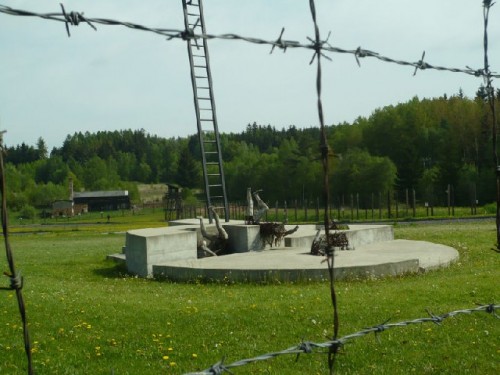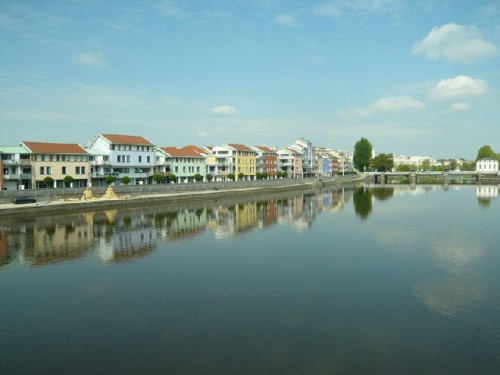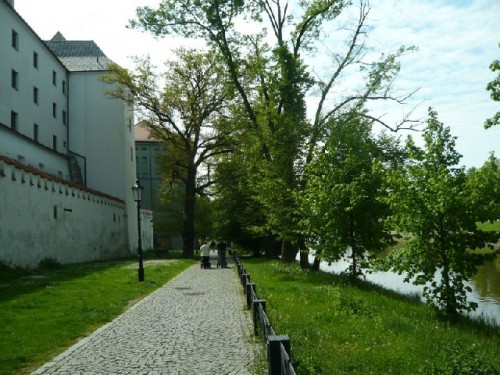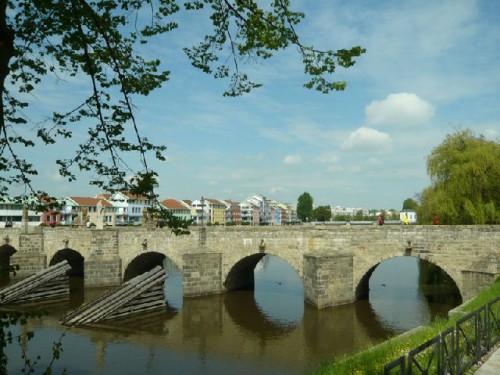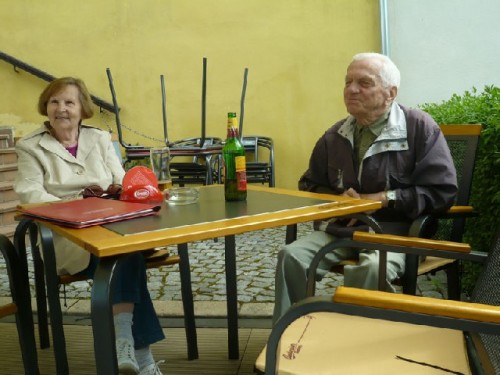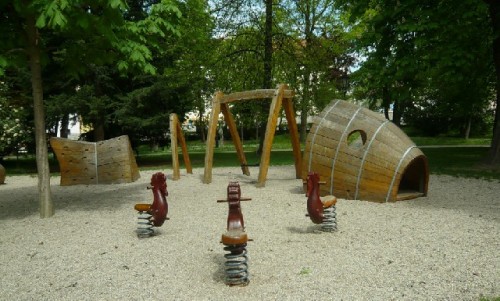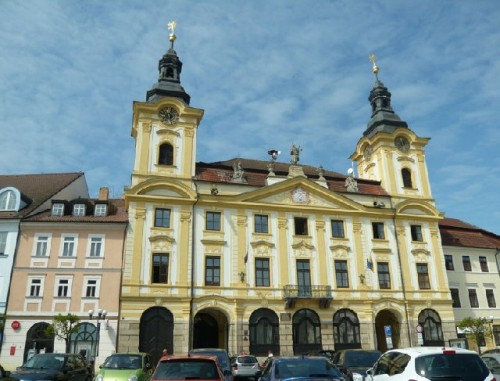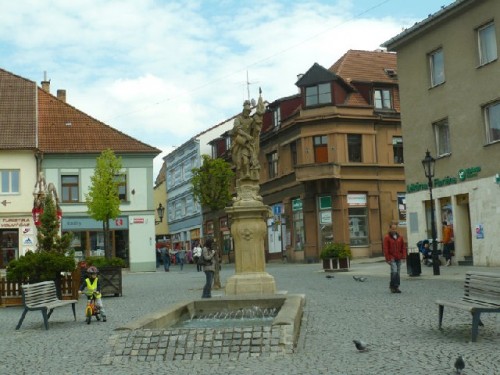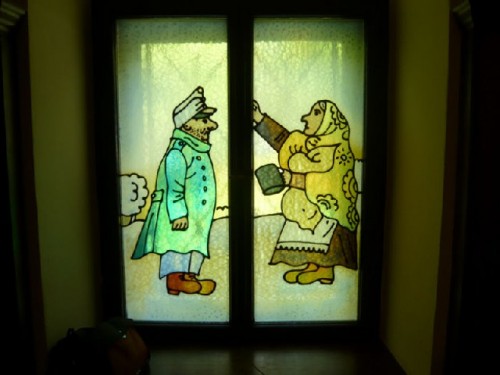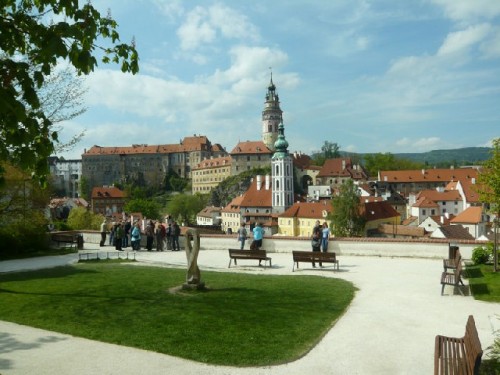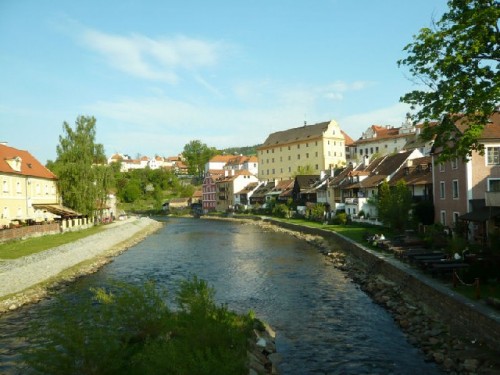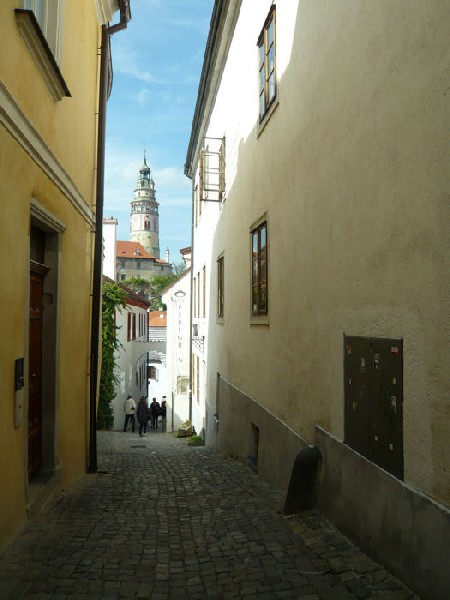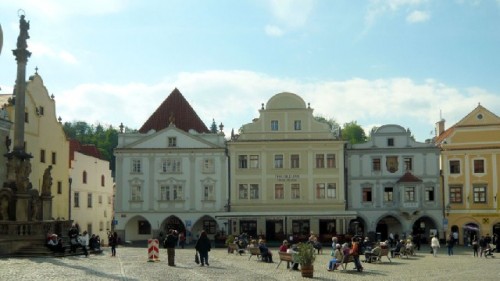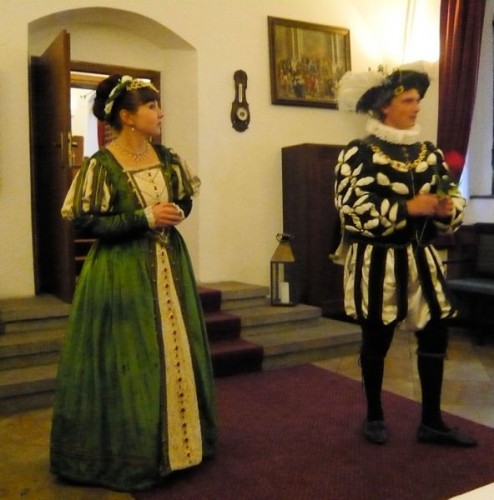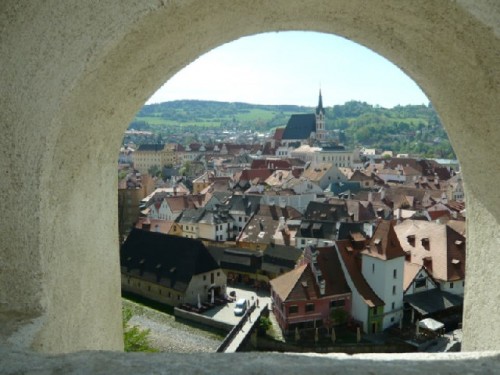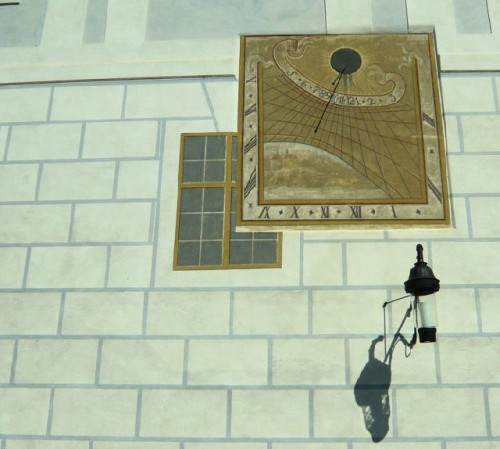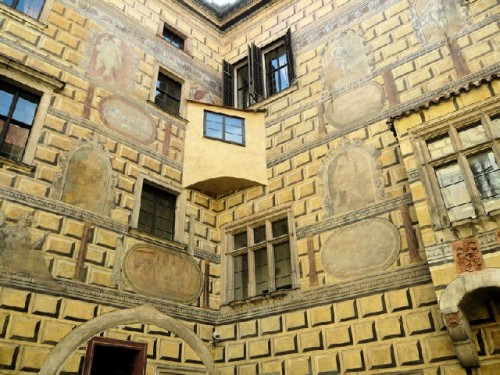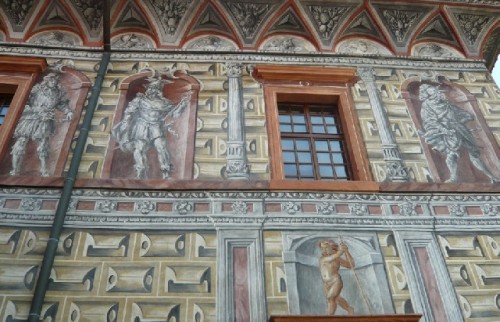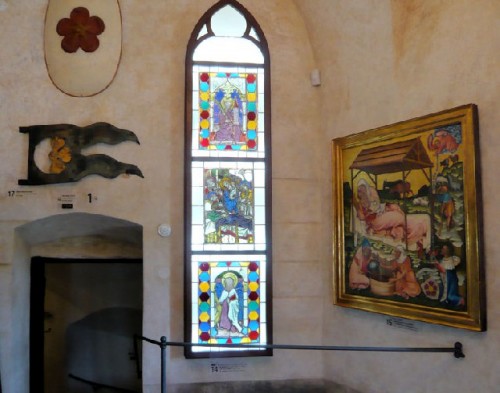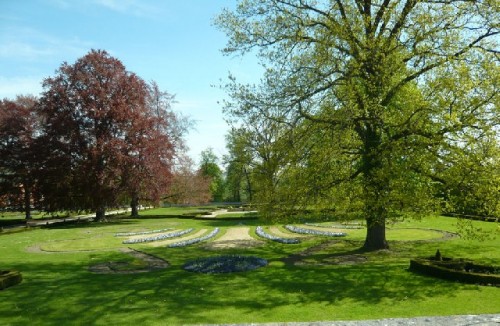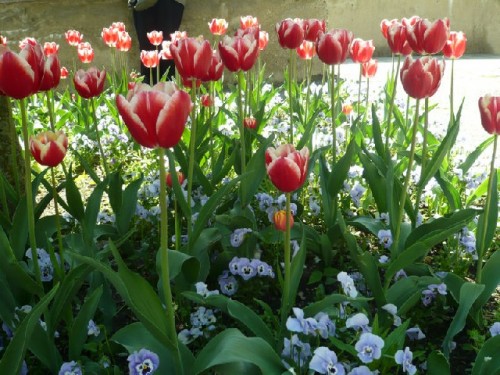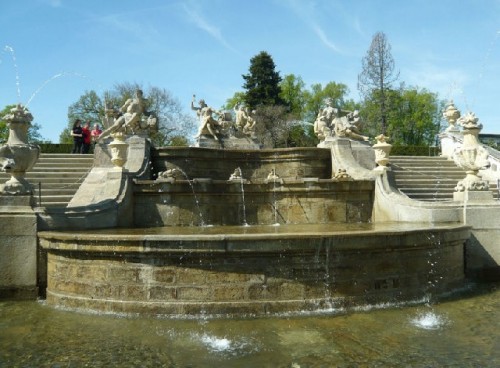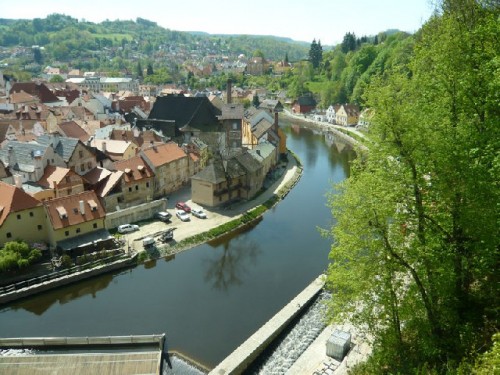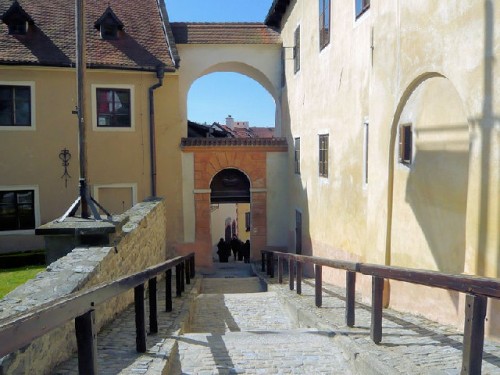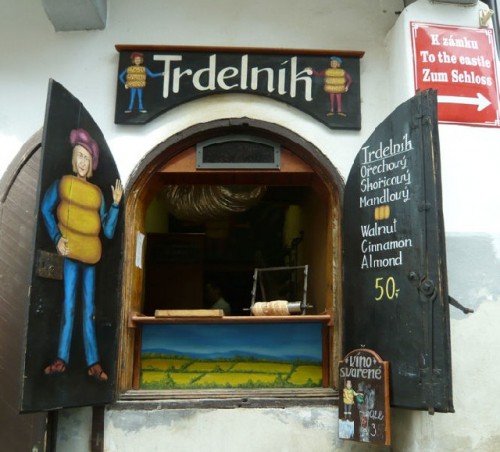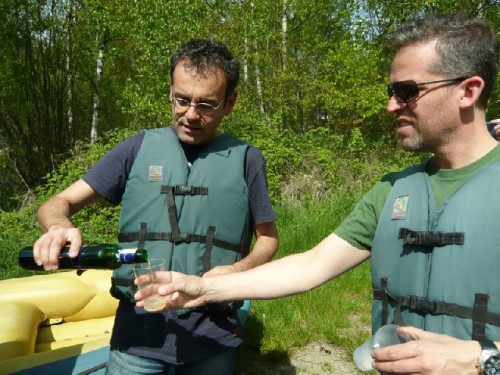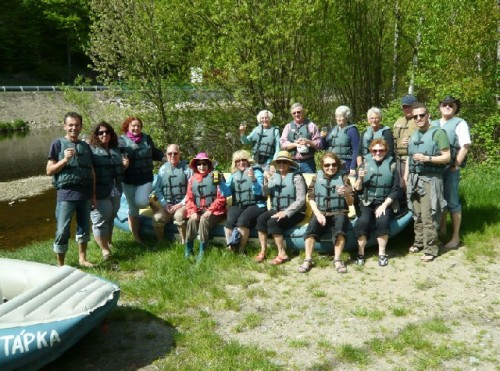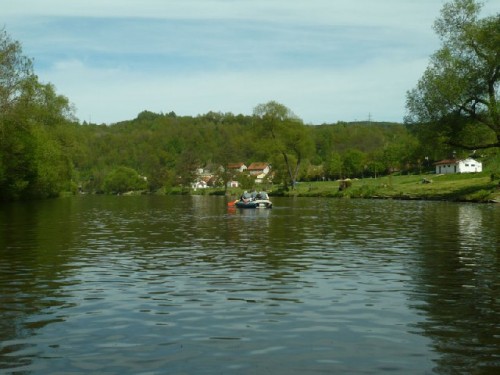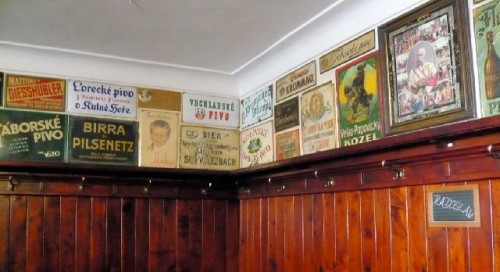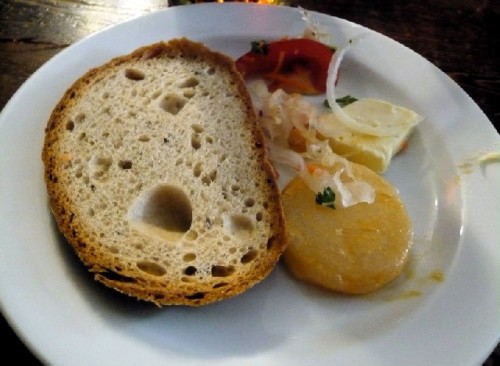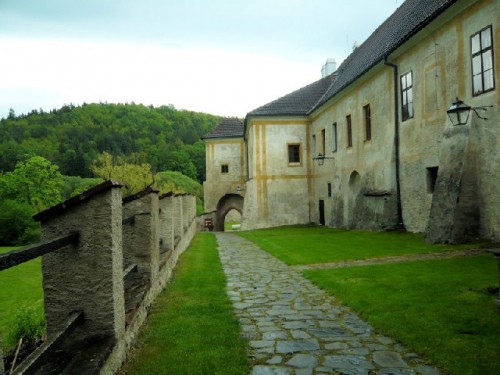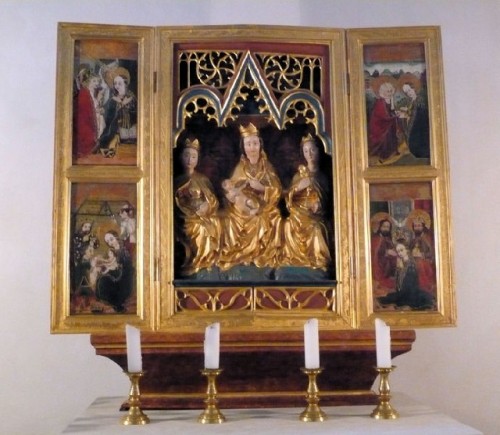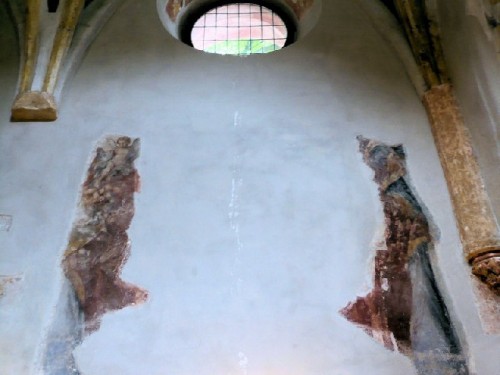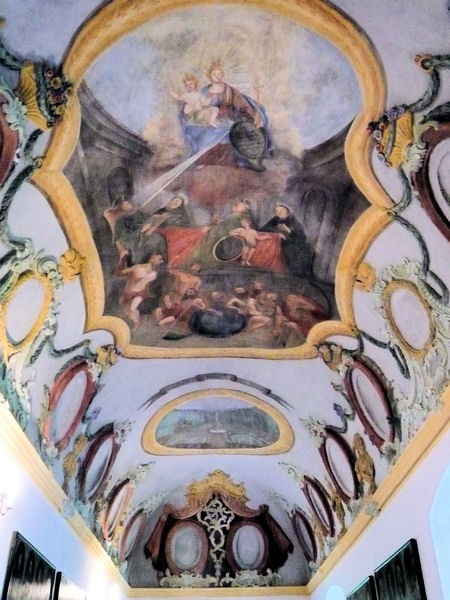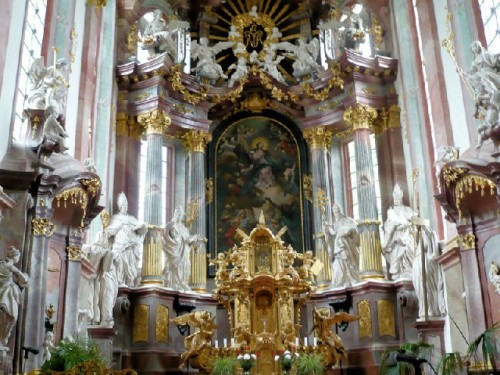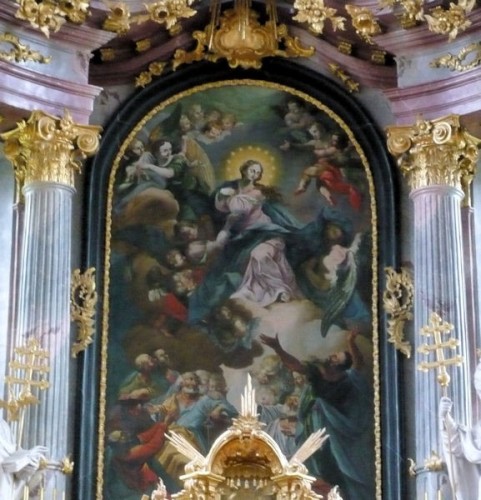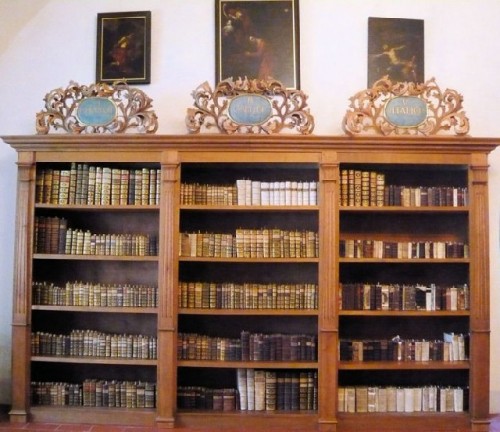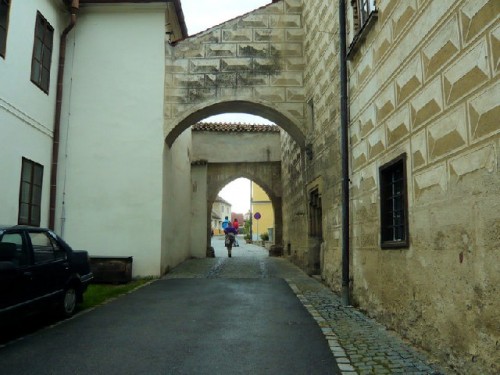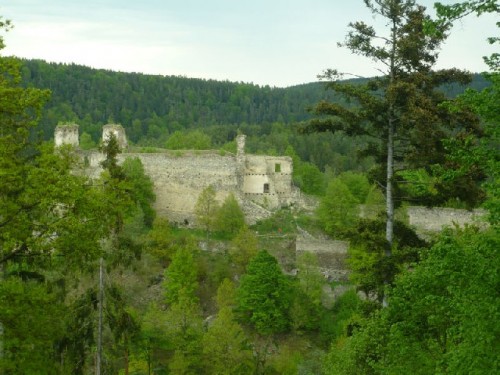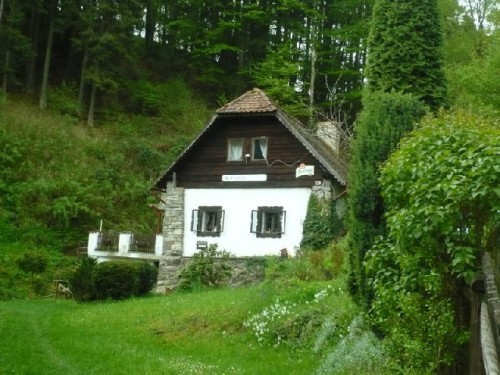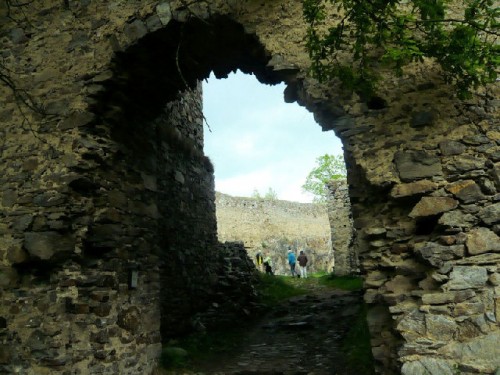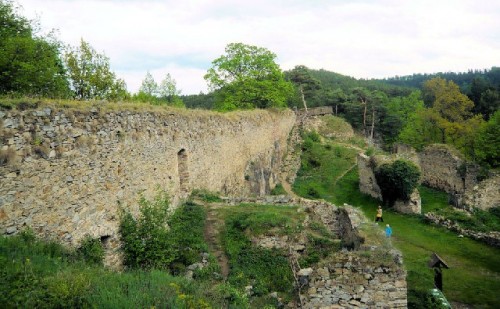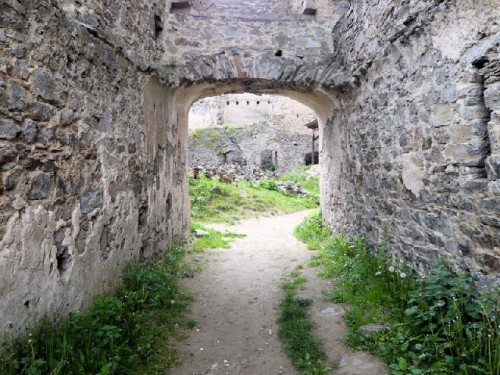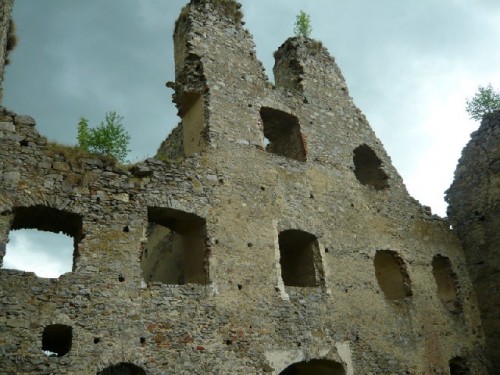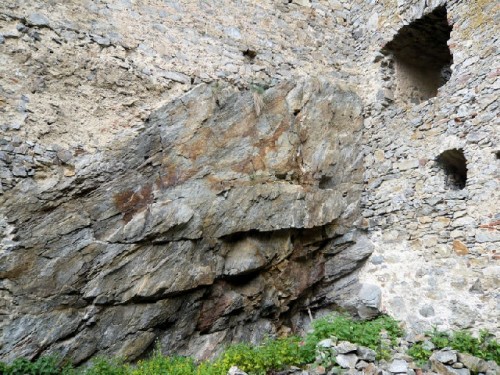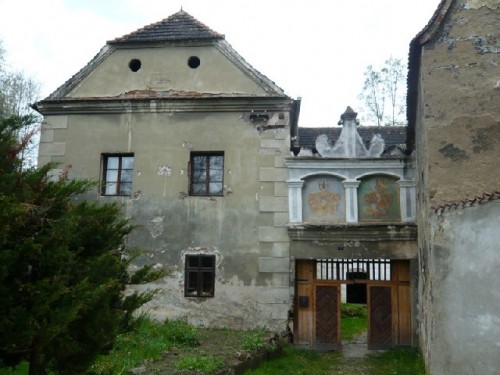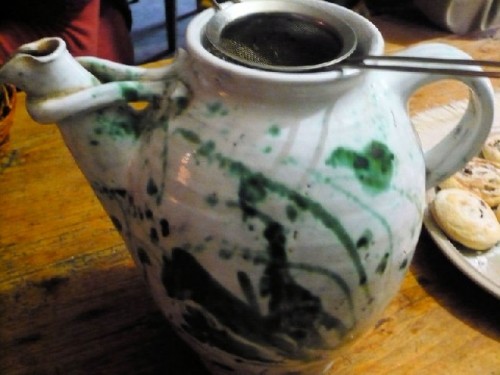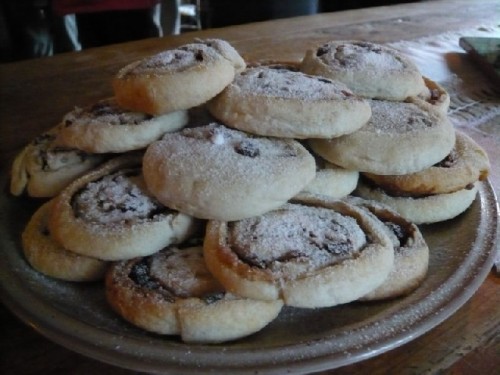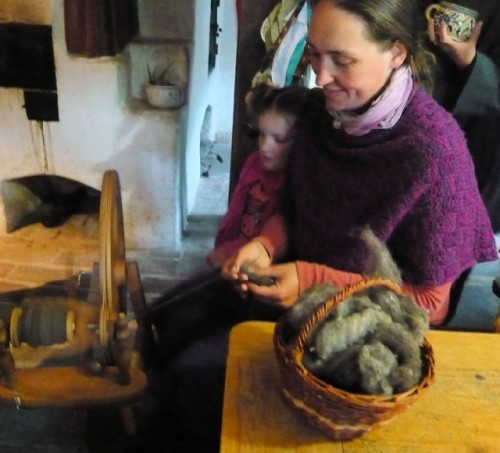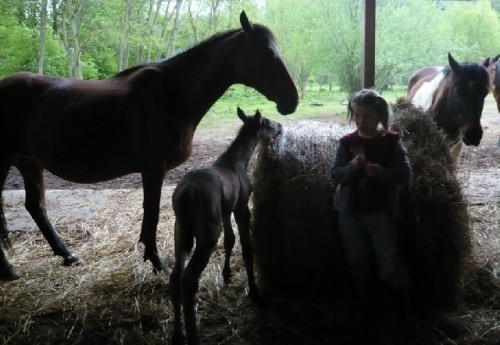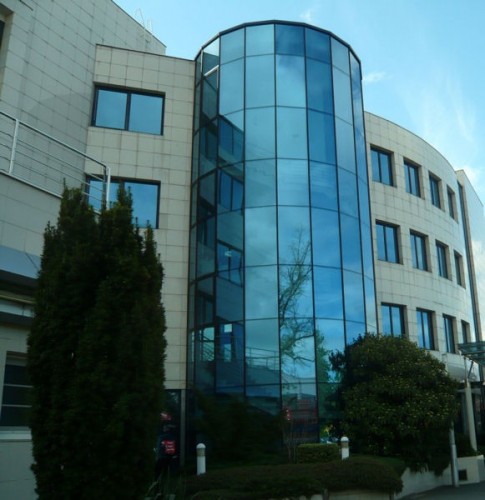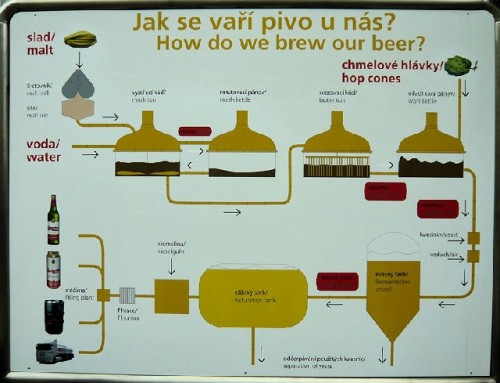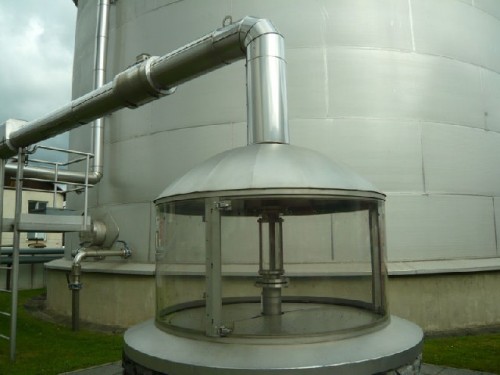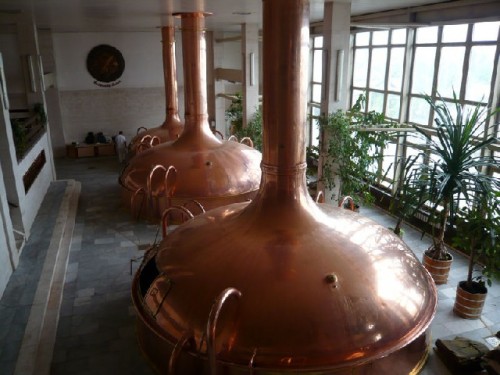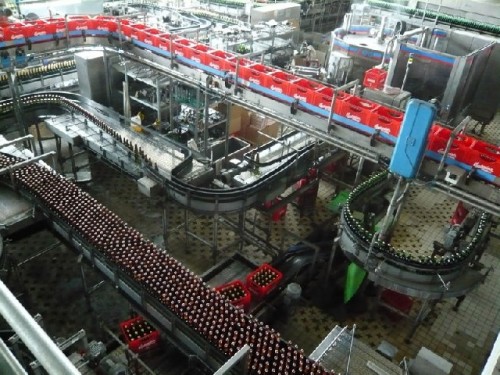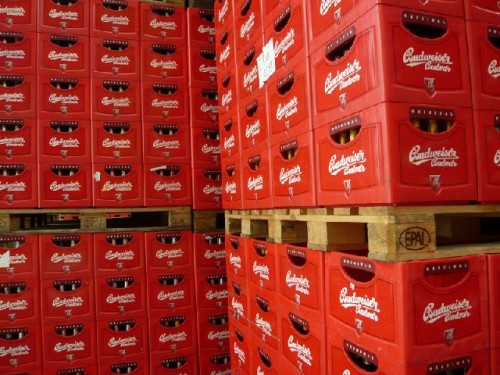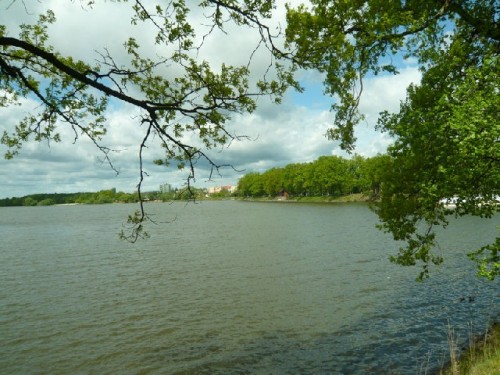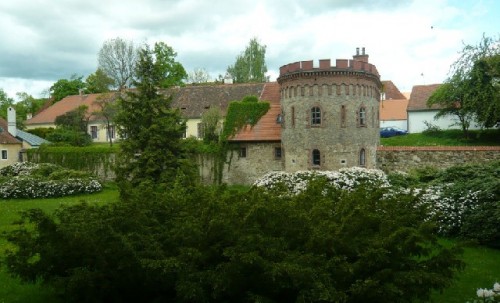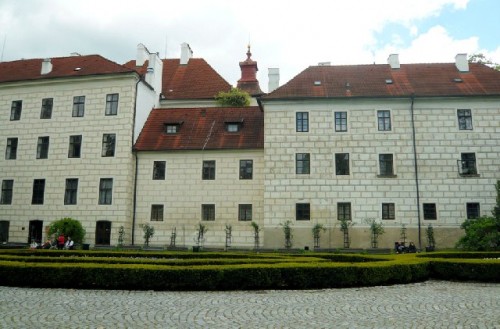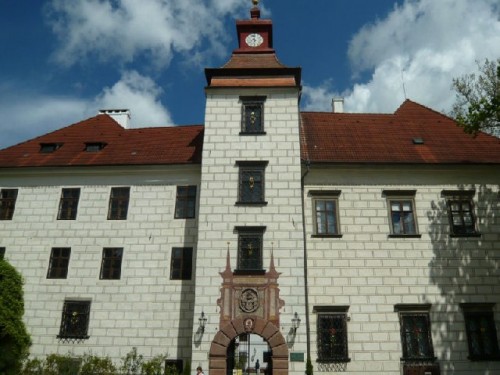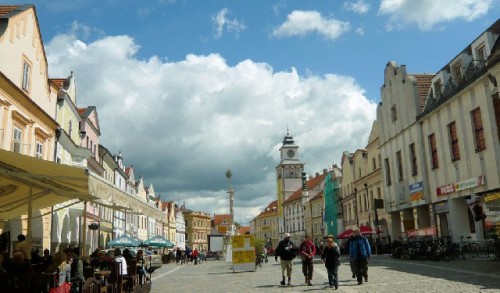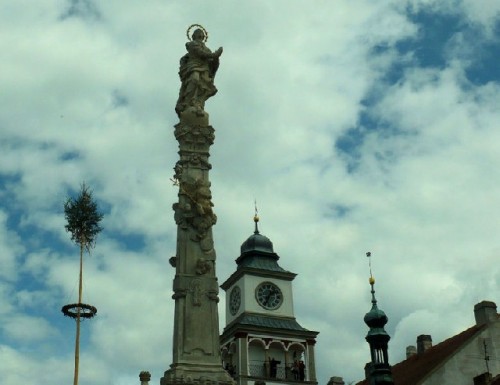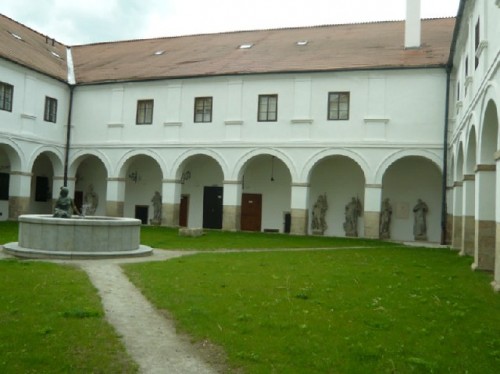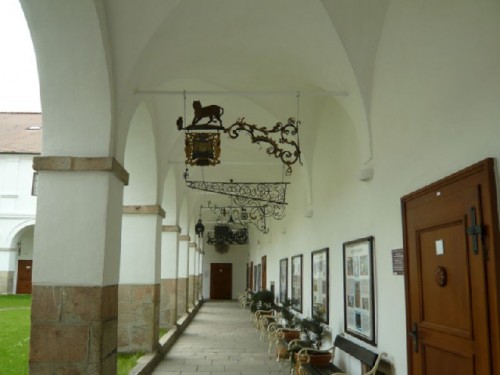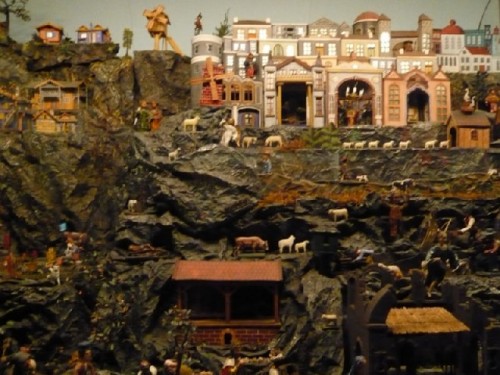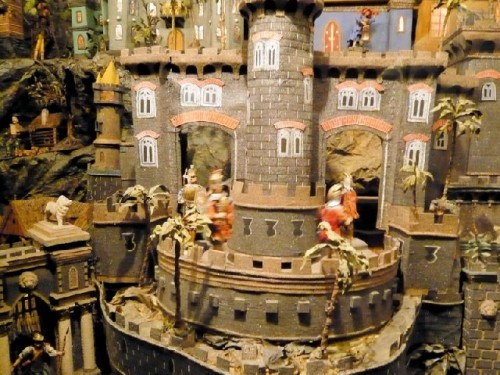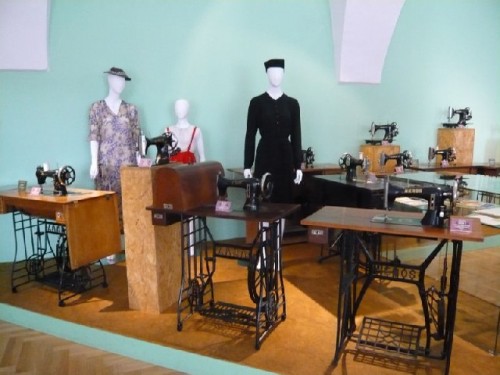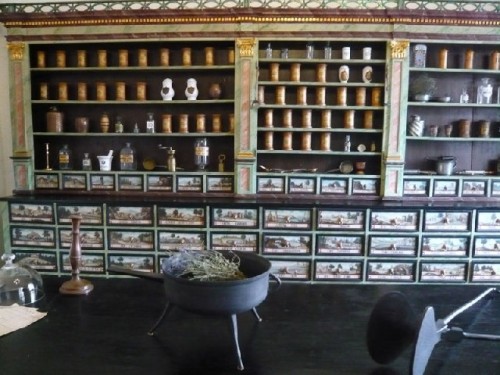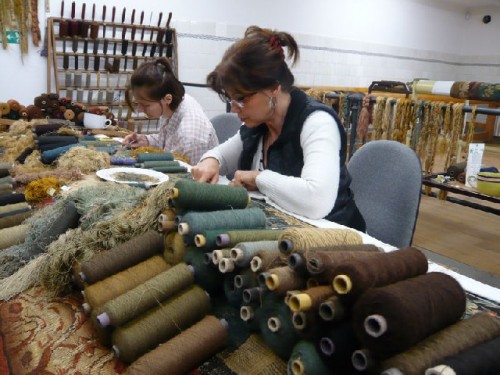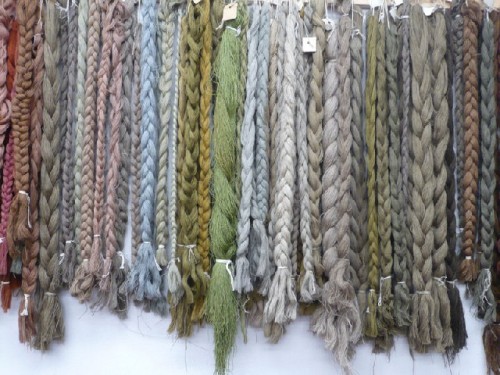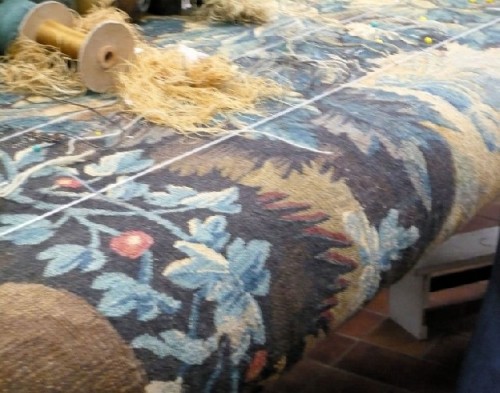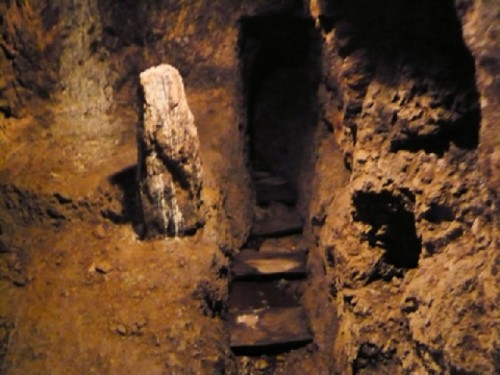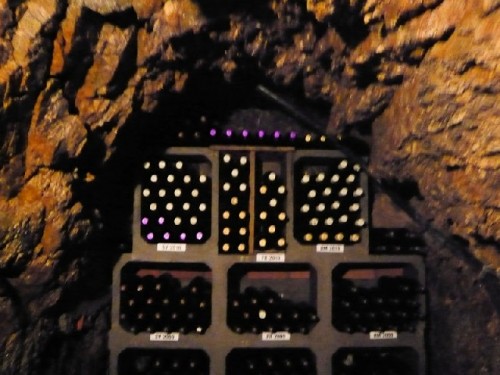Czech Republic: Part Two
Southern Bohemia
By: Zeren Earls - Jun 17, 2014
Traveling in Southern Bohemia was like moving back in time. On the way to Ceský Krumlov, we stopped by the Vojna Memorial, a heart-wrenching reminder of the Czech victims of the communist regime. Located in the middle of a forest, Vojna was originally built by German POW s after World War II as a labor camp to work the nearby uranium mines. With the communist takeover in 1948, Vojna became a forced labor camp for political prisoners. Behind barbed-wire fencing, displays depict the cruelties the prisoners faced if they attempted to escape.
Písek, about a hundred km south of Prague, was a beautiful stop-over for lunch. Founded in the early 13th century on the banks of the Otava River, the former royal town was named for its gold bearing sands (písek means “sand” in Czech) and protected by the castle, built to guard the gold panning areas and the gold trading route. Today only the western wing of the castle above the river stands.
Walking on the restored path between the castle and the river, we enjoyed the shimmering reflections of residential houses along the banks. Near a seven-century-old stone bridge, an impromptu stop by an outdoor café introduced us to a local couple enjoying the scenery. With Emil as our interpreter, we asked them questions about many things, including their seemingly calm life as retirees. At this stage in their lives they were satisfied to be living in this charming town of 30,000 residents.
Passing by a children’s playground, we reached Písek’s present-day town square, the dominant feature of which is the Town Hall (1740-65) with a Baroque façade and two towers. Near the square we enjoyed lunch at a quaint restaurant, which distinguished itself with its stained-glass windows depicting folk life, as well as a gastronomical novelty — deer pâté.
Leaving Písek, we drove by vast fields of yellow rapeseed flowers, the source of canola oil, and arrived in the outskirts of the medieval city, Ceský Krumlov. Stopping briefly for a panoramic view, we walked through the city’s narrow cobbled streets and arrived at the Old Inn Hotel, our home for the next three nights. Our luggage was brought in later, as the hotel is located on the main square, which is inaccessible to vehicles. Over a duck dinner at the end of our long day, we enjoyed Renaissance dances performed by a couple in period costumes in the building’s former chapel.
Ceský Krumlov is nestled inside a narrow loop of the Vltava River and has a hilltop castle. Crossing the stone bridge in the morning, we began our ascent to the top of the hill, enjoying views of the city and the river below, while bears roamed the castle’s moat. The castle site is situated on an oblong rock surrounded by the river; it consists of forty palaces and buildings, including a brewery, several courtyards, and a vast garden with ornate fountains and statues. The façade of the house of Vítkovci has Renaissance paintings depicting Greek and Roman scenes. The Castle Museum has a large collection of artifacts belonging to aristocratic clans of South Bohemia and previously hidden in the depositories during occupations.
On the way down, we tried a local specialty, trdelníh, a thin sweet wafer flavored with walnut, cinnamon, and almond. Lunch at the Svejk restaurant, named after a war hero, featured green pea soup and turkey served with polenta and vegetables, followed by apple rum cake.
During free time to browse, I went to a shop specializing in replicas of medieval glassware, usually of a greenish color and containing bubbles. Glass makers used wood as fuel at the time and so did not reach temperatures high enough to avoid bubbles in the glass. The coloring of the glass is due to minerals naturally present in the siliceous sand used to produce it. I bought a replica of an 18th-century hand-painted spirit bottle produced by traditional methods, with the exception of using gas as fuel. My bottle is signed by the master glass maker at the bottom, where the pipe leaves a scar.
Later in the day we drove to the country town of Vetrní for a rafting excursion along the Vltava River. After donning our life vests, Emil raised a traditional toast of Becherovka — 200-year-old Czech liqueur made of forty different herbs. Embarking on our journey, five paddlers and an instructor in each boat, we paddled three miles down river, meandering through the countryside, then rode over shallow rapids controlled by concrete weirs crossing the river. During the 90 minute excursion from country to town center we enjoyed a river perspective of the region’s highlights, including the castle perched on its rock base.
Emil rewarded the rafters by taking our group to the local pub, Na Louži, where we were introduced to a special brand of dark Czech beer. The variety of beer posters on the walls confirmed that the Czechs are world leaders in beer consumption. Large mugs of amber-colored beer arrived, accompanied by the specialty of the house, olomoucké syrecky — a snack of butter, cheese, sliced tomatoes, cucumbers, onions, and grated carrots, to be piled onto a piece of dark bread. I had to skip dinner following several slices of this tasty and hearty snack.
The next morning we journeyed outside Ceský Krumlov to visit the Zlatá Koruna (Golden Crown) Monastery, founded in 1263 to support the throne of a Bohemian king. Having gone through several reincarnations, the current structure is a 17th-century Baroque reconstruction. The core of the monastery is the Paradise court, flanked by cross cloisters. The oldest buildings are a chapel, dating back to 1370, and a 14th-century three-nave basilica. The interiors were decorated with rococo paintings in the 18th century. The main altar of the church, dazzling with its gold and marble, has an image of the Madonna of Zlatá Koruna (1410). Recognized by UNESCO as a national cultural treasure, the monastery also serves as a library for manuscripts and printed books from the 17th and 18th centuries. The manuscripts are not on display; the printed works are kept in glass cases.There is a fee of around $20 to take pictures indoors.
Not far from Zlatá Koruna is a Celtic settlement. We walked to a viewpoint to see the castle ruins from a distance, and then hiked through nature trails by the Kremže Creek to reach it. Along the way were abandoned farm houses vacated by the Germans after World War II, some of which have been restored as country homes in the woods. Celtic tribes came to Bohemia from Germany in 200 BC, attracted by the forests and fertile fields along the river. They reached a high level of social organization, establishing fortified settlements with agricultural hamlets. Eventually they were pushed out by Germans, who settled here in 100 AD.
The large ruin of the Dívcí Kámen castle rises on a rocky headland that has been settled since the Bronze Age due to its strategic spot on the Vltava River. In 1349 the noble Rosmberk family established here a typical Gothic castle consisting of two palaces with an inner courtyard. The steep slopes of the headland protected a system of surrounding walls, towers, and moats. The castle was the administrative center for the extra mural settlements of a town; by the middle of the 16th century it was abandoned because of maintenance costs. Climbing around the ruins, we were able to see part of the walls and masonry of the upper and lower castle.
In the village of Stare Dobrkovice we visited artist Anna Pešková-Nováková, who lived the traditional life of a century ago in an old mill with her family of four. Closed when the Soviets ended private enterprise at the end of World War II, the mill was purchased by Anna’s father after the Velvet Revolution making it possible for the family to live there. Anna hosted us in her kitchen, where a wood stove was used both for cooking and heating. One corner of the kitchen with a spotlight served as a painting studio. She made tea by steeping a big bunch of fresh mint from her garden in a ceramic pot of her own creation. Home-made cinnamon-raisin cookies with sunflower seeds accompanied the tea. While we enjoyed our snack, Anna demonstrated spinning wool at the wheel. Afterwards we went to see the goats and a day-old horse with her mother in the stable. Ducks in the garden and kittens in the house completed the animal menagerie.
On our last evening in Ceský Krumlov, I walked around the medieval city’s main square one more time, admiring its picturesque qualities. Although the buildings, connected to one another, wrapped the square, they stood out with unique façades retaining their owners’ individuality — each house with distinctive gables and façade ornamentation and painted a different color, a treat to the eye indeed.
In the morning we set out on our overland journey to Slavonice, with numerous stops along the way. Ceské Budejovice is the regional capital of southern Bohemia, where brewing dates back to the 13th century. We toured the famous Budweiser Budvar Brewery, founded in 1895, and learned about the process of brewing in copper vats, using Moravian barley and hops along with soft water drawn from the company’s own 300-meter-deep artesian well. The tour included the process of fermentation in cylinder tanks by the addition of Budvar yeast to process the sugar into alcohol and carbon dioxide. Then the young beer is put in vats to age in cool cellars, bottled and packaged by a computer-driven robotic system, then pasteurized to extend its life. In the end we were able to taste the beer drawn directly from the tanks in the cellar. The Budweiser beer brewed in the US since 1876 has no connection to the Czech brand; the name was chosen because it was synonymous with superior beer.
The next stop on our journey was Trebon, a picturesque town among ponds, founded in the middle of the 12th century as a market settlement by clearing space in deep forest. As it changed owners over the centuries, it acquired a brick fortification wall, a castle, and a handsome market square surrounded by residential bourgeois houses with Renaissance and Baroque gables. We walked by one of the ponds to the castle, distinguished by its clock tower, and entered the town’s historic center around Masaryk Square. The dominant building in the square is the Renaissance old town hall from 1566, to which an over-30-meter-high tower with an onion- shaped roof was added in 1636. In the middle of the square is a Renaissance stone fountain with the stone Marian Column towering nearby. The town tour ended with a delicious lunch at a local restaurant — grilled eel from one of the ancient fish ponds and ice cream with raspberry sauce.
The final road stop on our journey was in Jindrichuv Hradec, another charming medieval city with a huge castle outside its Old Town. We visited the castle museum, situated in the Renaissance building of a former Jesuit Seminary. The most famous collection in the museum is Krýza’s Crèche, the largest mechanical folk nativity scene in the world. Tomáš Krýza (1838 1918), a stocking maker by trade, worked over sixty years to create the nativity scene, which contains 1398 figures of people and animals, 133 of which are movable. The scene from Bethlehem, depicting the birth of baby Jesus with the holy family, three kings, and gift donors is the center piece of the exhibit; the mechanism, originally manual, has been converted into a single electrical motor. Among the other features of the museum are a historical apothecary, exhibits on middle-class and rural culture, and a gallery of fine art by Czech artists.
The former castle brewery is home to the House of Tapestry. Established in 1910, it presents traditional textile workshops, featuring experienced weavers and restorers at work. We watched two experts repairing an old piece of tapestry. To qualify for the museum job, they had had to pass a certification exam after four years of schooling and ten years of practical training.
The day’s journey ended in Slavonice with our arrival at the Dum U Ruže, a 16th-century house converted into a hotel with twelve rooms. The husband and wife who owned the hotel met us at the door and ushered us to our rooms in person, also extending an invitation to the hotel’s wine cellar once we freshened up. On my way to the cellar, I noticed a display case with replicas of historical glass. I made a mental note of a small vase for later purchase and headed to the cellar. Negotiating its very narrow stairs while hanging on to the rocky walls of the 400-year-old cave, I descended to level ground, surrounded by wine bottles. In by gone days these caves used to be passage ways for escape between adjacent houses. Their present use as wine cellars provided a memorable experience. We tasted two kinds of wine — a Pinot Gris and a Gewürztraminer.
Dinner at a local restaurant to the accompaniment of traditional Moravian music completed our welcome to Slavonice. After such a festive welcome, we looked forward to our next two days in this historic town on the Austrian border.
(To be continued)

